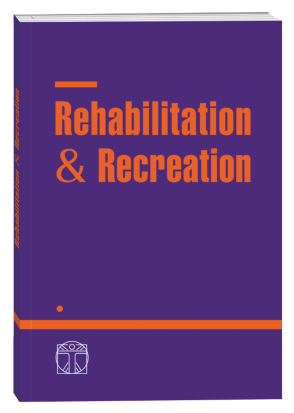SPORTS INJURY IN MODERN SPORT
DOI:
https://doi.org/10.32782/2522-1795.2022.11.24Keywords:
sports injuries, physical education, sports, traumaAbstract
The article summarizes the literature on the definition of sports injuries. Sports injuries should be understood as those changes that occur due to excessive functional overload of tissues in the process of sports. Compared to injuries related to industrial, agricultural, street, domestic and other injuries, sports injuries are relatively few and account for about 10 % of all injuries. The occurrence of sports injuries contradicts the health mission of the physical education system. Although these injuries are not usually life-threatening, they can affect a person’s general and athletic performance, leave them permanently disabled, and often take a long time to recover. According to many scientists, sports competitions are considered the most dangerous in terms of damage to the musculoskeletal system. It is no coincidence that sports leads in the number of injuries, mainly because they are characterized by rapid changes in movement based on the course of the game, making quick and effective decisions in periods of severe lack of time. Along with physical, athletes in game sports carry a great nervous and psychological load, which is combined with strong emotional arousal. First of all, this is due to physical contact, as well as frequent jumping, sprinting and sharp turns, ie movements, most often involved in the mechanisms of development of sports injuries. The greatest number of injuries are experienced athletes who perform at the highest level for more than 10 years. Injury prevention should include activities in several areas: organization, logistics, medicine and biology, psychology, physical education and training. Each of them hides risk factors and great opportunities for the prevention of sports injuries, rapid and effective treatment of sports injuries, and then their rehabilitation to improve the effectiveness of sports training.
References
Дорошенко Е. Ю. Проблема травматизму в ігрових видах спорту та перспективи використання засобів фізичної реабілітації. Молодіжний науковий вісник Східноєвропейського національного університету імені Лесі Українки. 2020. № 18. С. 127–132.
Мовчан В. П. Проблема травматизму в спорті та його профілактика. Молодий вчений. № 4.2. 2018. С. 207–210.
Мужичок В. О. Профілактика та попередження травматизму в фізкультурній та спортивній діяльності студентів ВНЗ. Молодий вчений. № 3.1. 2017. С. 257–261.
Козубенко Ю. Л. Зниження рівня травматизму у спортсменів шляхом впровадження лікувальної фізичної культури та масажу. Молодий вчений. № 9.1. 2017. С. 71–74.
Хіменес Х. Р. Травматизм у спорті. Львівський державний університет фізичної культури. Кафедра олімпійського, професійного та адаптивного спорту. [Електронний ресурс]. 2015 веб-сайт. URL: https://repository.ldufk.edu.ua/bitstream/34606048/3741/pdf (Дата звернення: 07.06.22).
Сокрута В. М. Спортивна медицина. Підручник для студентів і лікарів. Донецьк. Каштан. 2013. 472.
Курко Я. В., Кульчицький З. Й. Особливості рівня фізичного стану спортсменів за різних погодних умов . Педагогіка, психологія та медико-біологічні проблеми фізичного виховання і спорту № 4. 2011. С. 98–101.
Биба Л. М., Бабанін О. О. Спортивний травматизм під час занять фізичною підготовкою і його профілактика. Методичний посібник. Ужгород, 2010. 52 с.
Cahill B. R. Effect of preseason conditioning on the incidence and severity of high school football knee injuries / B. R. Cahill, E. H. Griffith // Amer. J. Sports Med. 2012. № 6 (4). P. 180–184.
Hootman J. M., Dick R., Agel J. Epidemiology of Collegiate Injuries for 15 Sports: Summary and Recommendations for Injury Prevention Initiatives J Athl Train. 2007, vol. 42, N. 2, pp. 311–319.
Downloads
Published
How to Cite
Issue
Section
License

This work is licensed under a Creative Commons Attribution-NonCommercial-NoDerivatives 4.0 International License.











